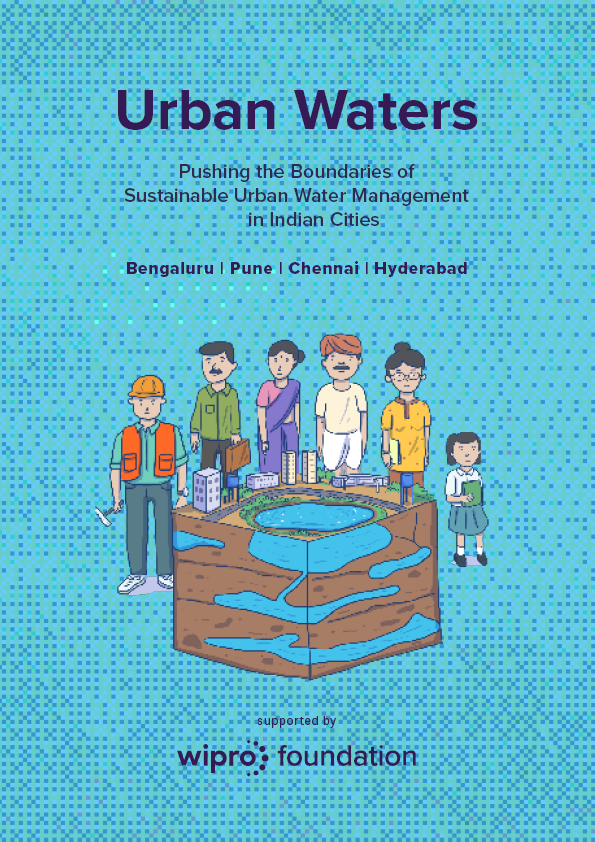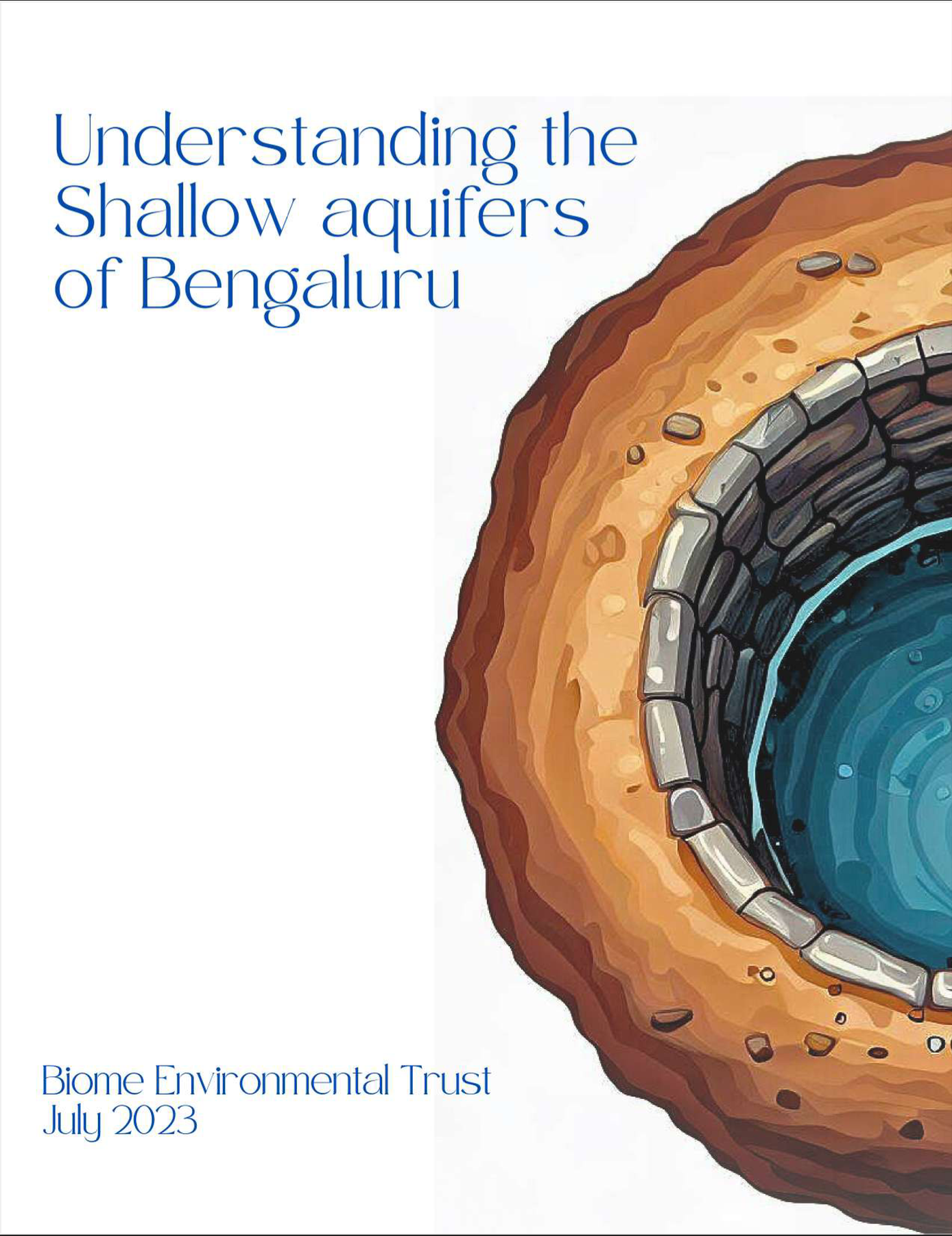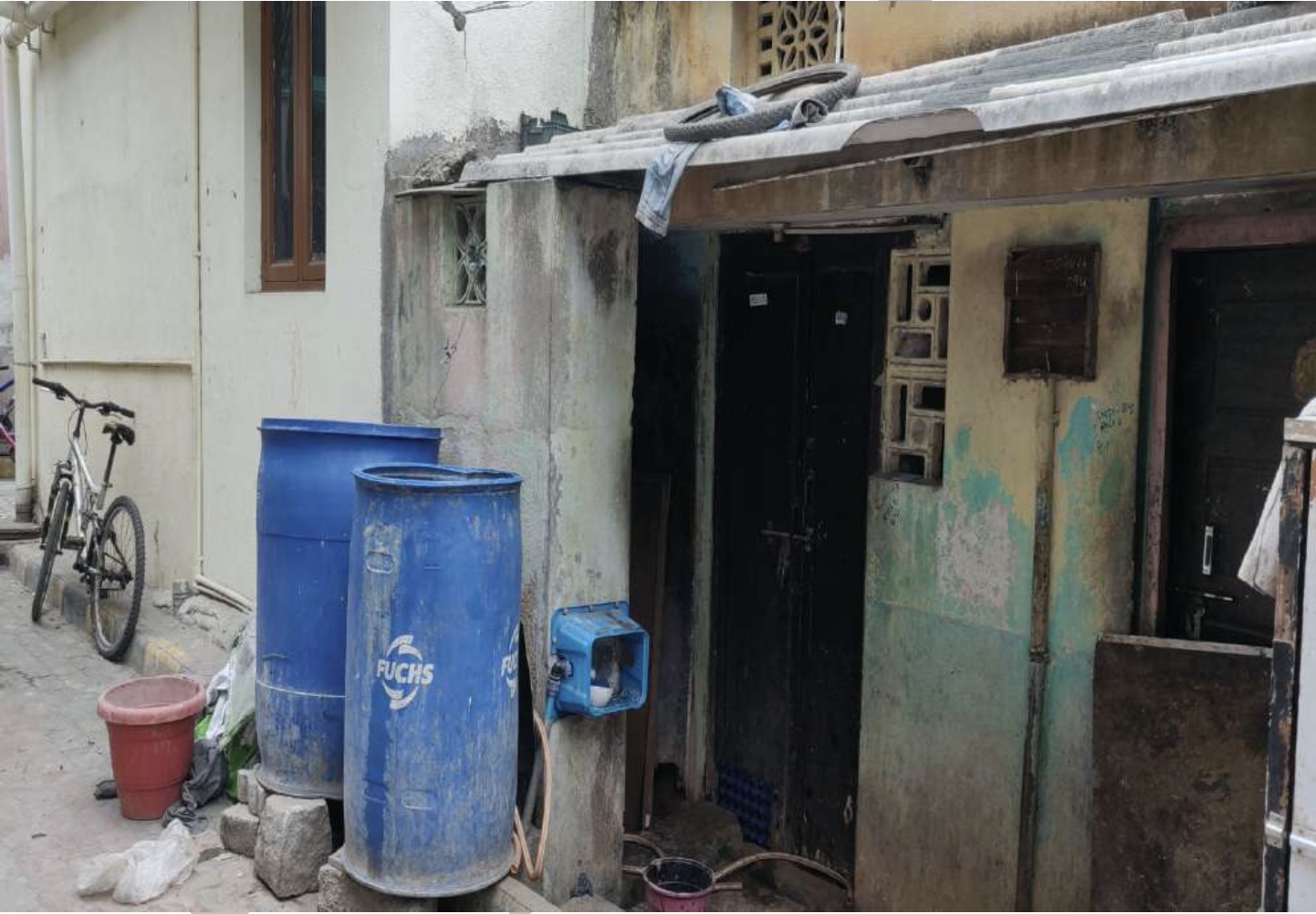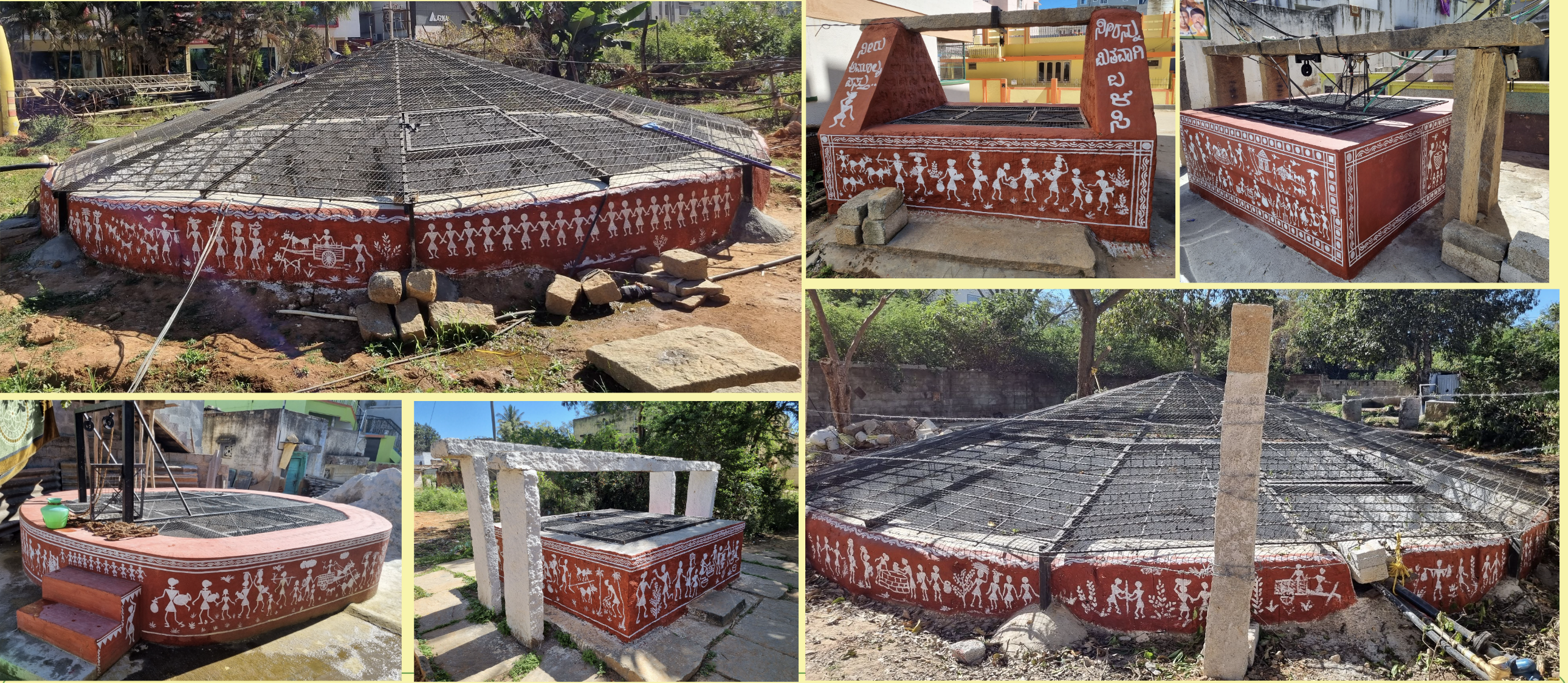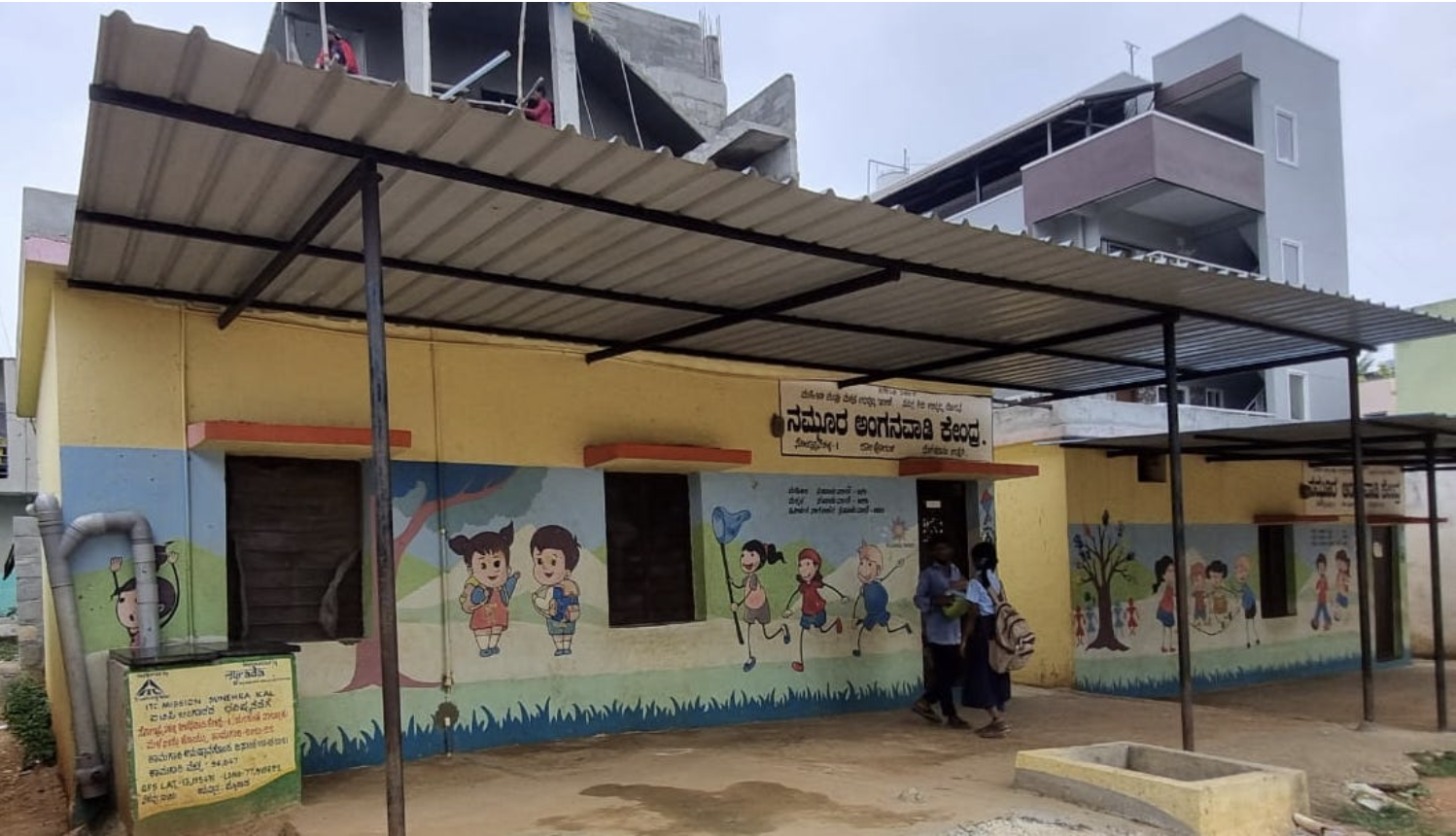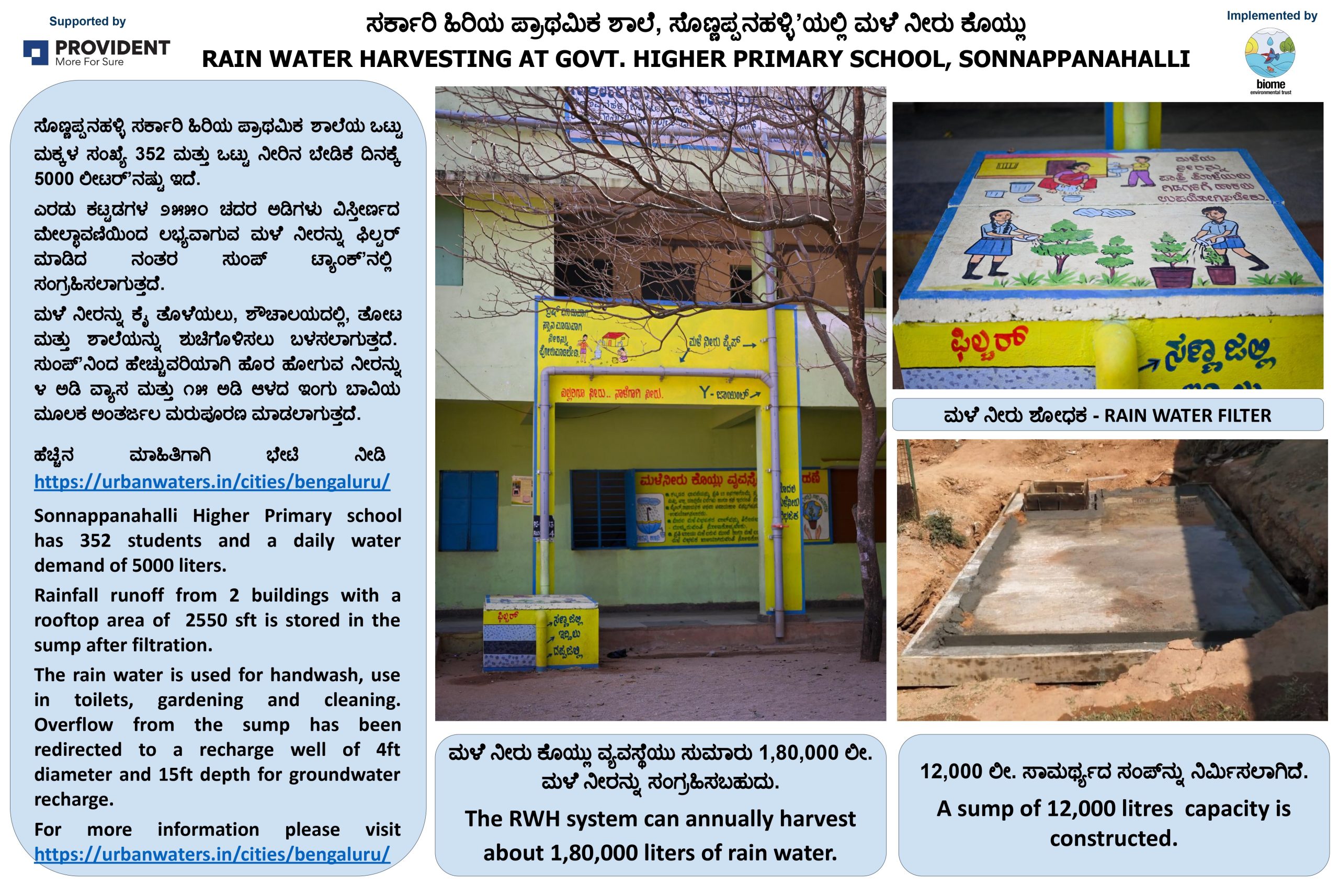Rainwater Harvesting at Mr Abhishek Oommen’s house
Mr Abhishek Oomen built a house in OMBR layout in the northeast of Bengaluru. The construction of the house started in 2017 and was completed in 2018.
The house has two floors, the ground and the first. The overall area of the house is 211 sqm (2271 sq ft). The total number of people living in the house presently is 9.

A few years back Mr Oommen had come across an article in the Times of India Sunday Magazine section, which spoke about water scarcity in Bengaluru and how the city was one of the worst affected in the world. This article motivated him to work towards water conservation consciously. When the construction of his new house was being planned, he decided to install a rainwater harvesting (RWH) system, for which he took Biome’s help.
Water sources
During the construction of the house, Mr Oommen chose not to drill a borewell. Water supplied by tankers was used for the construction. He was keen to minimize dependency on external sources of water to the extent possible, and the RWH system has helped in this objective. Currently, the harvested water is used for watering the rooftop garden and for toilet flushing.
Mr Abhishek applied for a BWSSB water connection in 2018 by paying a fee of Rs 120,000, which was provided within a couple of months. The BWSSB-supplied water is used to meet other domestic needs like cooking and bathing.
Rainwater harvesting system
Water needed for 9 people per day is as follows (according to the Ministry of Housing and Urban Affairs standards):
|
Total number of persons staying in the house |
Per person per day demand (LPCD) |
Total demand for house (LPD) |
|
9 |
135 litres |
1215 litres |
The terrace has an area of 114.5 sqm (1232 sq ft). Assuming the annual rainfall to be 930 mm, the rainwater harvesting potential per year is 96 KL (kilolitres).
The rainwater harvesting potential is calculated by multiplying the roof area in square metres with the runoff coefficient (the percentage of rainwater that can be obtained from the catchment surface) and the rainfall in mm (a*b*c).
Roof area: 114.5 sqm (a)
Runoff coefficient: 0.9 (b)
|
Rainfall (c) |
10 mm |
30 mm |
60 mm |
930 mm |
|
Runoff from rainfall (KL) (a*b*c) |
1.03 |
3.03 |
6.18 |
96 |
|
Days of demand met |
1 day |
2.5 days |
5 days |
79 days |
According to BWSSB regulations, one needs to harvest 60 litres of rainwater runoff per square metre of rooftop area. For a rooftop area of 114.5 sqm, the minimum required storage would be 6.8 KL (114.5*60). This house already has a rainwater storage tank of 30 KL capacity, and hence meets the BWSSB requirement.
The RWH system is designed in such a way that the water from the rooftop is carried by downtake pipes into four separate filters – two Rainy dual intensity filters and two ferrocement filters with gravel. The water from these filters is led into the rainwater tank.
Apart from the tank to store the rainwater, a recharge well of 20 ft depth has also been dug. The overflow from the rainwater tank is let into it. If the recharge well overflows, the excess water is let out into the external stormwater drain.
Water thus collected during the rainy season meets the flushing and gardening needs all through the winter season. During the summer months, the house uses BWSSB water.
In terms of maintenance, Rs 4000 is spent annually on cleaning the rooftop. The filters are cleaned by Mr Oommen himself, and hence there is no cost incurred for filter cleaning.


Figure 1 – Commercial branded filters


Figure 2 – Ferrocement filters
The RWH system is in good shape to date and serves its intended purpose. There have been no unforeseen issues. On a few occasions in the past, getting the tenants to keep the rooftop clean was an issue, but this is not a significant challenge.
Storage tanks
There are two tanks in the house. One of 10 KL capacity is for storing BWSSB water, and the other of 30 KL capacity is for rainwater. A provision to let BWSSB water into the rainwater tank has been made.
Overhead tanks
There are two overhead tanks, each of 2 KL capacity. One is for storing BWSSB water, and the other is for rainwater. In case the rainwater runs out, there is a valve that lets BWSSB water into the gardening and toilet flushing pipes.
Installation costs
Since the RWH system was installed as a part of house construction, the exact costs of the system are not known. However an estimated cost breakdown would be as follows:
|
Item |
Costs in INR |
|
4” PVC pipe for RWH system fixtures at Rs 200 per RFT + 1” to ½” CPVC pipe from RWH tank to OHT + plumbing labour costs |
75000 to 100000 |
|
Masonry filter |
20000 to 25000 |
|
RWH tank at Rs 20 – 25 per litre |
10 KL tank: 200000 to 250000 |
|
1 HP pump and electrical connections |
15000 |
|
Recharge well 3 ft x 20 ft |
45000 to 50000 |
|
Total |
355000 to 440000 |
By harvesting rainwater, Mr Abhishek Oommen has avoided using groundwater completely and reduced the house’s dependence on Cauvery water. He also recharges the groundwater table through his recharge well.
Watch this video to see Mr Abhishek Oomen’s RWH system and to hear him talking about it.


